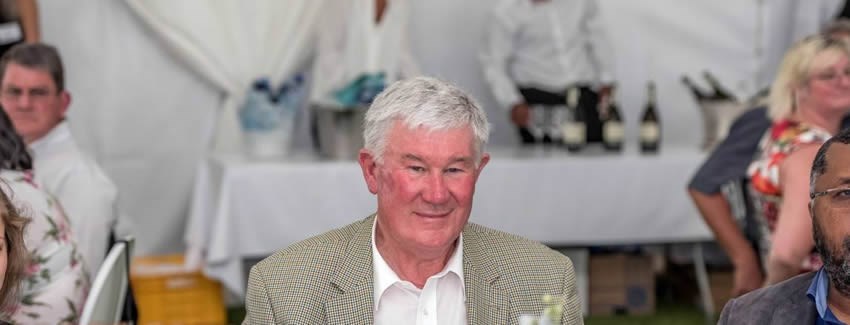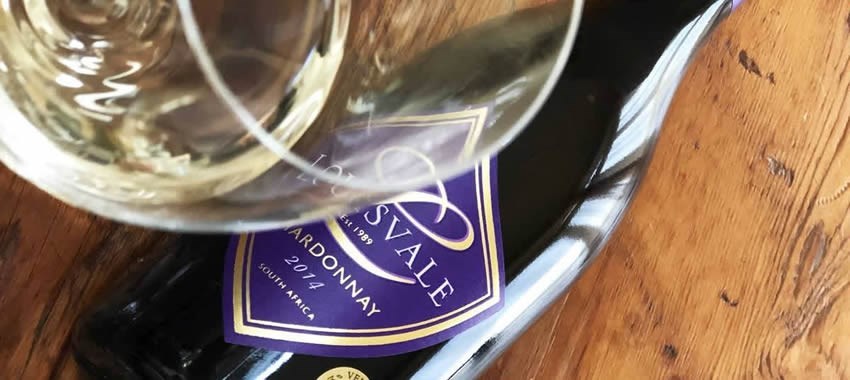The Romans may have brought the ancestors of Chardonnay to the Gauls – but a group of determined South African winemakers brought the great white grape of Burgundy to the Cape over forty years ago. Defying plant import controls on vine stock which could delay the planting of new clones and varieties by up to two decades, a few brave men smuggled the first Chardonnay stokkies from Burgundy into the Cape in a story worthy of Al Capone. (Emile Joubert records his father’s role with Jan Boland Coetzee and Danie de Wet in this escapade at www.winegoggle.co.za/2020/03/31).
Chardonnay captures the zeitgeist in these prohibition days of on-off alcohol bans and bootlegged booze. Talk about the world’s most sought-after stokkies. Jancis Robinson writes, “Chardonnay cuttings are sought after the world over … Such is Chardonnay’s glamour that it has probably been the variety of which most cuttings have been smuggled by ambitious wine producers thwarted by plant quarantine regulations” in the new world. In a twist, some of those early cuttings turned out to be Auxerrois Blanc, the eminence gris of Alsace, which can develop the character of mature Chablis. The Chardy smuggling ring was exonerated by the Klopper Commission in 1985 – and controls eased.
Chardonnay starts to make a tantalising appearance in early editions of John Platter’s South African Wine Guide in the early 1980s. Paging through my highly-prized collection of indispensable guides – the 2020 is the fortieth milestone edition - the earliest references to maiden 1980 vintages made from older KWV clones were made by members of the pioneering Chardonnay Club: De Wetshof, Backsberg and Simonsig. By 1986, the first wave of proud Chardonnay producers had grown to fifteen cellars with maiden releases by inter alia Blaauwklippen, Boschendal, Hamilton Russell Vineyards, Le Bonheur, Nederburg (1985), Overgaauw, Rustenberg, Van Loveren and Vriesenhof.
I can spend an entire day under lockdown, nostalgically reading those early editions of John Platter’s great wine guide. How times change. In the long-running glossary of varietal styles, Chenin Blanc is not listed in the early editions – but you will find three categories of Steen: dry, off-dry and semi-sweet. You’ll also find Cape Riesling, Weisser Riesling and Emerald Riesling. In the 1982 edition, John Platter comments on Chardonnay, “Why it hasn’t done well here is a mystery. To make a fine wine from Chardonnay requires some dedication. It is almost like having to make a red wine after all the complications of cold fermentation for a white. We now have one or two Chardonnays in the Cape that show it is possible after all to make magnificent, big but elegant wines from this grape”.
By the mid-1980s, Chardonnay in the Cape was winning superior awards (earning a coveted gold band on the neck of a bottle in a blind tasting) under the old wine of origin system (1973). The early Platter’s carry a glossary explaining the three-stripe ticket carried by those early wines. In a nostalgic mood during one of the prohibition cycles, I explored some of the older wines in my collection from the 1970s and 1980s still bearing the delightful trio of blue band (WO), red brand (declared vintage) and green band (for single variety wines with 75% of cultivar), and the white estate ticket. You were a connoisseur if you could read this vinous shorthand as a party trick in a bar in my student days.
Chardonnay was starting to win four to five stars – and earning bright red splotches of print in Platter’s. The rebel grape really arrived when Sydney Back won the prestigious Diners Club Winemaker of the Year in 1986 for the wood-aged white category with Backsberg’s Chardonnay 1985. And De Wetshof showed its commitment to the cultivar as its future, winning overall best wine of the show at VinExpo in France with its Chardonnay 1985. Danie de Wet released the first wine made from the new clones in 1991 – and won Diners Club Winemaker of the Year in 1993 for his troubles – a feat repeated by Gottfried Mocke of Cape Chamonix in 2006, and Clayton Reabow of Moreson in 2018. Stellenbosch, Robertson, Elgin and the Hemel-en-Aarde Valley emerged as the exciting new home of Chardonnay in the Cape – a resilient grape which loves limestone terroir. De Wetshof hosts a biannual global Celebration of Chardonnay to benchmark the Cape vs the rest.

Danie de Wet, South African Chardonnay Icon
The rest is history. Chardonnay went on a rollercoaster ride around the world in the 1980s and 1990s before succumbing to varietal fatigue as consumers began to cry Anything but Chardonnay (ABC). A movement against those big buttery styles of over-oaked golden Chardonnay, eventually led to a surge in unwooded new-world Chardonnay, to try to create a newfound demand for more straightforward, simpler expressions of pure varietal fruit. The Burgundians stuck to their guns through thick and thin. The wheel turned full circle as All About Chardonnay became the new rallying cry. Chardonnay carries its crown as one of the world’s most widely planted white grapes.
It is thirsty work reading through dusty old editions of Platter’s in my lockdown cellar – and time for a taste. Over 7% of the South African vineyard is planted to Chardonnay today – from many Dijon and Mendoza clones – and dozens of producers making wooded, unwooded and sparkling MCC wines. Over four decades, Chardonnay has grown into the fourth most planted white wine grape in the Cape – with the biggest plantings in Robertson, Swartland, Breedekloof, Paarl and Stellenbosch, respectively. It is one of the big five after Chenin Blanc, Colombard and Sauvignon Blanc Specialists who lead brand Chardonnay today include De Wetshof, Bouchard Finlayson, Capensis, Creation, Hamilton Russell, Cabriere, Louisvale, Newton Johnson, Richard Kershaw, Tokara and Van Loveren.
During the third alcohol ban, I enjoyed tasting my way through a top range of Chardonnay made by Louisvale Wines, the cellar in the Devon Valley which has specialised on this variety since its founding in 1989. Their four expressions of Chardonnay demonstrate the diversity and complexity of this cultivar. I started with the unwooded 2019 vintage – a delightful wine which expresses pure citrus varietal fruit. Then the lightly oaked Chavant Chardonnay 2018, a wine which offers the best of both worlds. Next up Louisvale MCC Brut, a scintillating sparkling wine with gorgeous Granny Smith apple character – ending with the barrel-fermented estate Chardonnay, an intense wine made for rich food, with cleansing lemon-lime nuances. A tasting at their stylish restaurant is a real treat.

Moving mountains – metaphorically in my lockdown cellar – I headed to Van Loveren in the Robertson Wine Valley. The Retief family first planted Chardonnay in 1979, released their maiden vintage in 1983, and make at least six expressions of their flagship white variety today in a range of styles ranging from lighter-bodied to fuller-bodied, oaked versions. Their viticulturalist explains that Chardonnay does well in Robertson – one of the five great Chardonnay regions of the world - due to “A unique combination of natural phenomena. The red Karoo soils have a high limestone content that provide good growth without being overly rich. The healthy climate keeps rainfall low at the most crucial ripening periods in the vine’s cycle. Early-ripening suits the cultivar. The natural suitability for the region means less interventions, good acidity and great diversity of flavour and aromas from climate and soils”.
While tasting my way through Van Loveren’s “Shades of Chardonnay”, I enjoyed exploring the many dimensions of a single variety grown in different terroirs and given differing vinification to create a diversity of wine styles at different price-points. From Van Loveren’s unwooded Chardonnay – a delicate wine with charming apple, pear and peach flavours – to Tangled Tree, lightly wooded with a rounded, nutty character. Similarly medium-bodied, Rhino Run Chardonnay is a lip-smacking zesty citrus spritz and a nutty, biscuity palate. In a fuller, richer barrel-fermented style, the Zandvliet Chardonnay is a tangy tropical medley of lime, nectarine and peach flavours with butterscotch nuances – while the flagship single vineyard Christina has a linear core of pure citrus fruit and great texture.
I ended my lockdown flight of the great grape of Burgundy with a tasting of Chardonnay from Haute Cabriere in the Franschhoek Wine Valley – a region which has adopted Chardonnay as its signature white grape. Patriarch Achim von Arnim, one of the Cape’s founding Burgundian winemakers, has pursued his passion for Pinot Noir and Chardonnay over the last forty years at this renowned family cellar. The two grapes are the cornerstone of Cabriere’s acclaimed still, best-selling dual blend and sparkling MCC wines today. Cellar master Takuan von Arnim has released two new Chardonnay wines – a premium unwooded Amphora Chardonnay (rated 4,5 stars) and an Unwooded Chardonnay which expresses the vibrant fruit-driven tropical style and crisp acidity of a specific block, using two different yeasts to build complexity.
